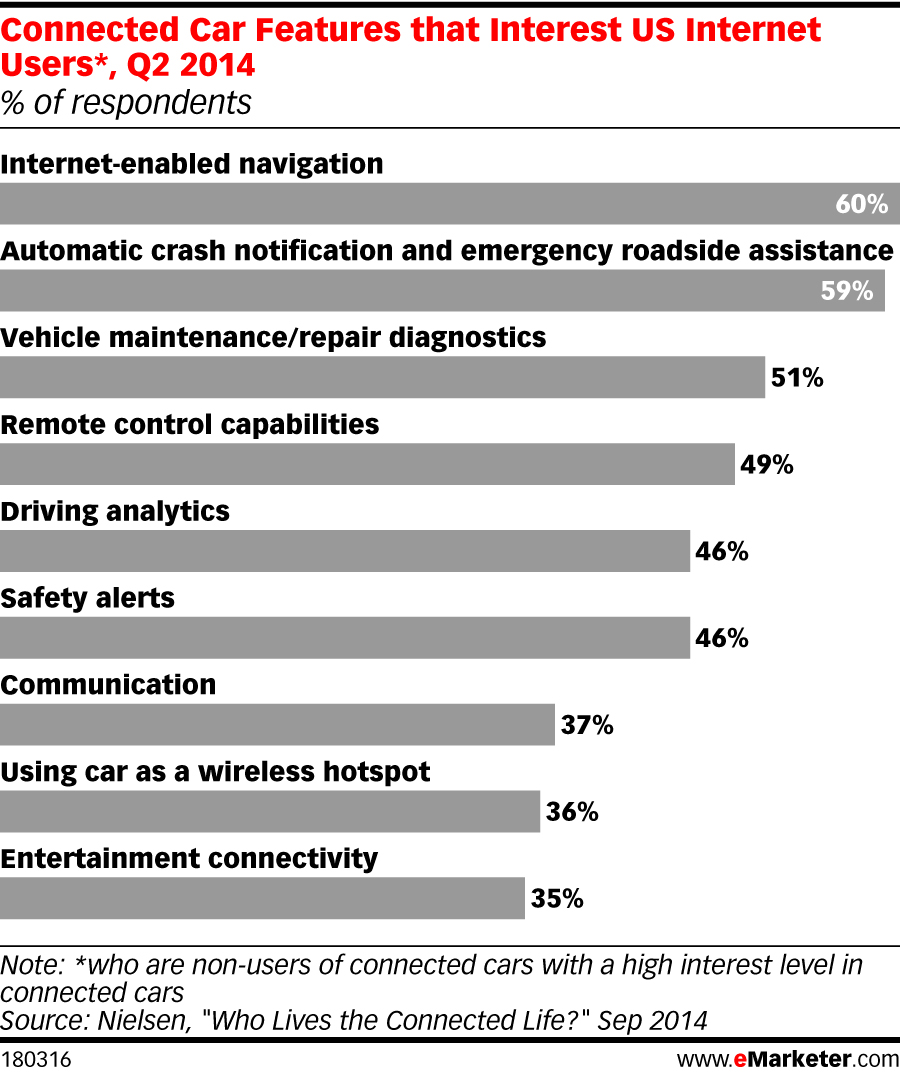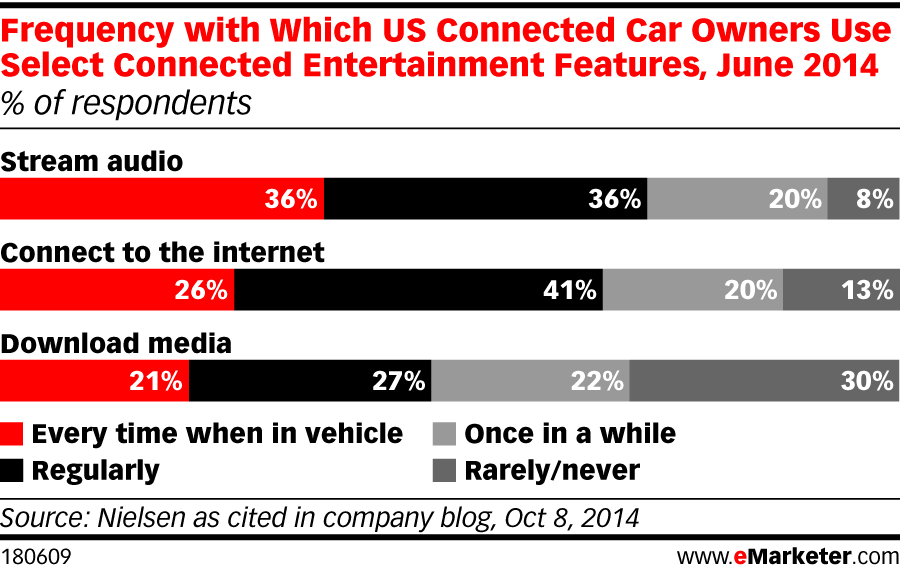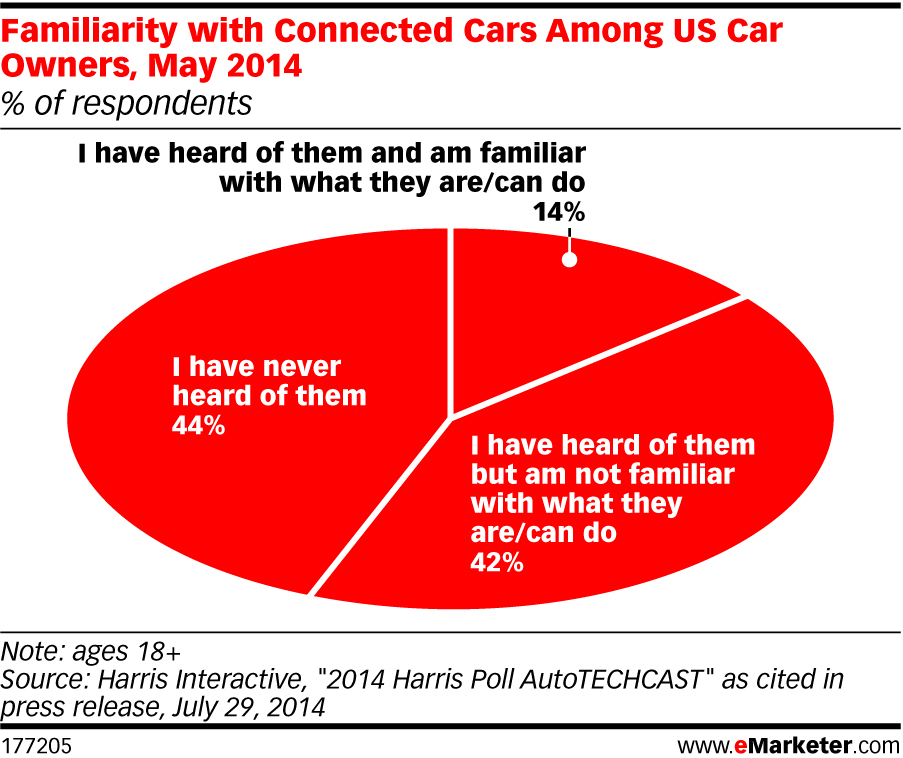It’s estimated that by 2015, more than half of global vehicles sales will be made up of connected cars. As the connected car is still a relatively new concept for buyers, it will be crucial for manufacturers and brands to determine which features truly interest them.

Not surprisingly, the “driving assistance and safety” category is top of mind. The “infotainment” features that the auto industry is attempting to upsell, however, are not as important in comparison.

Looking closer at the infotainment features, it is clear that in-car music streaming, which replaces traditional car radio, enjoys high popularity among connected drivers. (No wonder Pandora has been aggressively vying for the market.) Downloading media content, in comparison, is most likely hindered by the high cost of data plans in connected cars, which remains a major obstacle for connected car adoption.

A look at the big picture, though, reveals that the majority of U.S. car owners don’t really understand the full capabilities (and possibilities) of the connected car. The auto industry will need to do a better job at familiarizing car consumers with the great benefits of connected cars if they wish to stay ahead of the curve.
